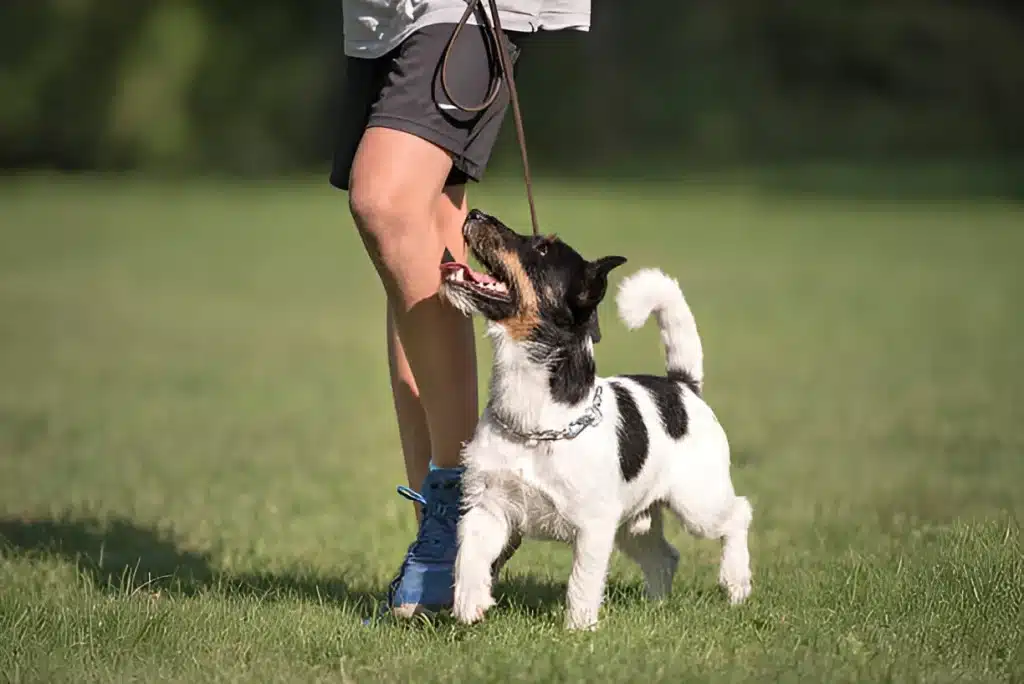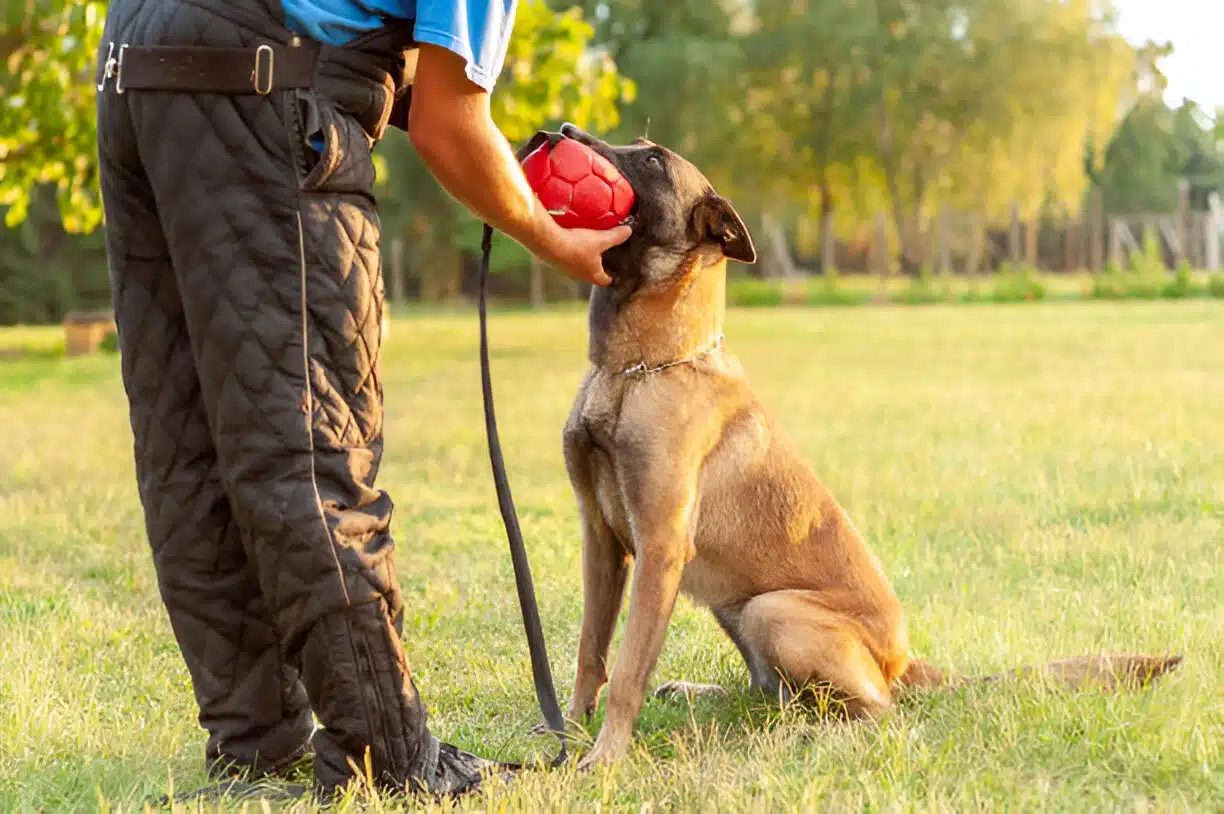By Drew Watson, Certified Dog Trainer (CPDT-KA)
Dog training is a transformative journey for both pets and their owners, fostering better behavior, stronger bonds, and safer interactions.
But one question lingers for many: why is dog training so expensive?
The price tag can feel daunting—ranging from $30 for a group class to tens of thousands for specialized service dogs.
In this guide, we’ll break down the factors driving these costs, explore how expensive dog training can get, and highlight why it’s often a worthwhile investment.
Drawing from industry insights and real-world expertise, this post aims to help you understand the value behind the price.
What Makes Dog Training Costly?
Dog training isn’t just about teaching “sit” or “stay.”
It’s a complex process involving skilled professionals, tailored techniques, and ongoing care. Here’s why the costs add up:
1. Expertise of the Professional Dog Trainer
A trainer’s experience is a major cost driver. Seasoned professionals with years of handling diverse breeds and behavioral issues—like excessive barking, leash pulling, or aggression—charge more for their expertise.
According to industry standards, a highly skilled trainer might command $100–$150 per hour for private sessions, compared to $30–$50 for a beginner.
Why? Their proven methods deliver lasting results, often addressing complex dog behavior problems that novices can’t tackle.
Trainers invest heavily in their education, attending workshops, earning certifications (e.g., CPDT-KA from the Certification Council for Professional Dog Trainers), and staying updated on canine psychology.
This expertise ensures your dog gets a customized plan, whether for basic obedience or advanced skills like therapy work.
Expert Tip: Victoria Stilwell, a celebrated dog trainer and TV personality, suggests, “Invest in positive reinforcement training—it’s pricier due to the skill involved, but it builds trust faster and lasts longer.” This explains the premium for advanced techniques.
2. Training Methods and Techniques
The approach a trainer uses impacts pricing.
Traditional methods, like dominance-based training, might be less expensive but can be outdated.
Modern techniques—such as positive reinforcement with treats or clicker training—require deeper knowledge of behavior modification, increasing costs.
For instance, a trainer specializing in reward-based methods might spend extra time crafting a plan that motivates your dog without force, justifying a higher fee.
Specialized training, like agility or scent detection, demands unique skills and equipment, pushing prices even higher.
These methods aren’t one-size-fits-all; they’re tailored to your dog’s needs, adding to the expense.
3. Location and Facility Costs
Where training happens matters.
In cities with high living costs—like New York or Los Angeles—trainers charge more to offset rent and overhead.
A private session in an urban indoor facility with agility courses could cost $120/hour, while rural group classes might be $40.
Facilities with advanced setups (e.g., padded floors, obstacle courses) also bump up fees due to maintenance expenses.
If a trainer travels to your home, expect added charges for time and gas—sometimes $20–$50 extra per visit.
4. Resources and Equipment
Training isn’t cheap for trainers either.
They invest in tools like clickers, leashes, treat pouches, and agility gear.
For service dog training, costs soar with needs like harnesses, vests, and medical supplies (e.g., vaccinations, spaying/neutering).
Trainers also spend on continuing education—books, courses, seminars—to refine their craft.
These expenses trickle down to clients, contributing to the overall price.
Expert Tip: Frania Shelley-Grielen, a renowned veterinarian and animal behaviorist, advised, “Choose a trainer with credentials and a track record—paying more upfront for expertise saves you from fixing mistakes later.” This underscores why experienced trainers justify higher rates.

How Expensive Is Dog Training Across Different Types?
Dog training costs vary widely depending on your goals. Let’s explore typical price ranges and what they include.
Basic Obedience Training
For foundational skills (sit, stay, come), group classes are budget-friendly, averaging $30–$80 for a 6–8-week course.
Private lessons, offering one-on-one attention, range from $45–$120/hour.
Puppy classes often fall in this bracket too, focusing on socialization and housebreaking.
Behavioral Modification
Addressing issues like aggression or separation anxiety requires intensive work.
Private sessions can cost $100–$200/hour, with packages spanning weeks or months totaling $1,000–$2,500.
The complexity of dog behavior drives these rates.
Service Dog Training
Why is dog training so expensive for service dogs? These animals undergo 1–2 years of rigorous preparation to assist with disabilities (e.g., guiding the blind, alerting to seizures).
Costs range from $10,000–$50,000, covering adoption, health care, and specialized training.
Nonprofits may offset this for eligible recipients, but private programs pass the full expense to buyers.
Expert Tip: Jean Donaldson, a pioneering veterinarian and behaviorist, notes, “Service dog training costs reflect hundreds of hours of work—think of it as paying for a skilled partner, not just a pet.” This highlights the intensive investment behind these programs.
Protection or Specialty Training
Protection dogs, trained for security, fetch $35,000–$100,000 based on breed and skill level.
Agility or tracking training, while less extreme, still costs $50–$150/hour due to niche expertise and equipment.
Why Is Dog Training So Expensive in Different Cities?
Location influences pricing significantly.
Here’s a snapshot of average costs across U.S. cities, based on market trends:
-
- Las Vegas, NV: $50–$150/hour (private); $40–$80/class (group).
-
- Seattle, WA: $60–$130/hour; $50–$100/course.
-
- Atlanta, GA: $75–$150/hour; $300–$500/packages.
-
- Miami, FL: $50–$120/hour; up to $1,000 for intensive programs.
-
- Houston, TX: $45–$100/hour; $400–$600/week for board-and-train.
Urban areas with higher demand and overhead naturally charge more.
Rural settings or humane society classes (e.g., $125 in Phoenix, AZ) offer cheaper alternatives.

The Value Behind the Price
While the question how expensive is dog training focuses on dollars, the benefits justify the investment:
Strengthened Bonds
Training builds trust and communication.
Through consistent sessions, you and your dog develop a shared language, deepening your relationship.
It’s not just about commands—it’s about mutual understanding.
Improved Behavior and Safety
A well-trained dog is a polite, safe companion. Commands like “come” or “leave it” prevent accidents, while curbing jumping or barking enhances social harmony.
For service dogs, this training is life-changing, enabling independence for their handlers.
Long-Term Savings
Investing upfront can reduce future costs—vet bills from fights, property damage from chewing, or fines from unleashed behavior.
A $500 training package now could save thousands later.
Tips to Manage Dog Training Costs
Worried about the expense? Here are practical ways to make training affordable:
-
- Start with Group Classes: They’re cost-effective and great for socialization.
-
- DIY with Guidance: Use online courses or books, supplementing with occasional professional check-ins.
-
- Prioritize Needs: Focus on critical skills first (e.g., recall) before splurging on tricks.
-
- Research Local Options: Nonprofits or shelters often offer discounted programs.
Final Thoughts: Is It Worth It?
So, why is dog training so expensive? It boils down to expertise, resources, and the tailored effort required to transform your dog into a reliable companion.
Costs vary—from a few hundred dollars for basic skills to tens of thousands for service or protection dogs—but the payoff is a happier, safer pet and a stronger bond with you.
Whether you opt for a budget class or a premium program, the value lies in the results.
Have questions about training costs or methods? Drop them below—we’re here to help!
